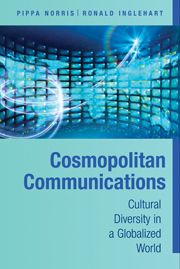Book contents
- Frontmatter
- Contents
- Tables and Figures
- Acknowledgments
- INTRODUCTION
- PART I FIREWALLS
- PART II CONSEQUENCES
- CONCLUSIONS
- Technical Appendix A: Concepts and Measures
- Technical Appendix B: List of Countries
- Technical Appendix C: Methods and Multilevel Regression Models
- Notes
- Select Bibliography
- Index
- Titles in the Series
Technical Appendix C: Methods and Multilevel Regression Models
Published online by Cambridge University Press: 05 June 2012
- Frontmatter
- Contents
- Tables and Figures
- Acknowledgments
- INTRODUCTION
- PART I FIREWALLS
- PART II CONSEQUENCES
- CONCLUSIONS
- Technical Appendix A: Concepts and Measures
- Technical Appendix B: List of Countries
- Technical Appendix C: Methods and Multilevel Regression Models
- Notes
- Select Bibliography
- Index
- Titles in the Series
Summary
As not all readers may be familiar with the analytical methods used in this study, a brief note will help to clarify the techniques. The firewall theory developed in Chapters 1 and 2 predicts that individual use of the news media will have a direct effect on individual values. In addition, it predicts that a cross-level interaction effect will also be apparent, as external and internal barriers to information flows in each society will interact with individual patterns of news media use.
To operationalize these factors, the key models in the second section of the book involve measurement at two distinct levels. A representative sample of individual respondents (Level 1) is nested within national-level contexts (Level 2). The World Values Survey was conducted among a representative random sample of the adult population in each nation-state.
The danger of using ordinary least squares (OLS) regression for analysis is that the standard errors of the regression coefficients can be inaccurate for contextual and cross-level variables, because they overestimate the degrees of freedom, and therefore tests of significance can prove misleading. OLS models can attempt to control for national variations by using a pooled model including dummy variables for each country, but this becomes inefficient with the coverage of many nations. Alternatively, OLS models can be run with no pooling, where separate models are run for each nation or type of media environment, but this is also clumsy.
Information
- Type
- Chapter
- Information
- Cosmopolitan CommunicationsCultural Diversity in a Globalized World, pp. 322 - 328Publisher: Cambridge University PressPrint publication year: 2009
